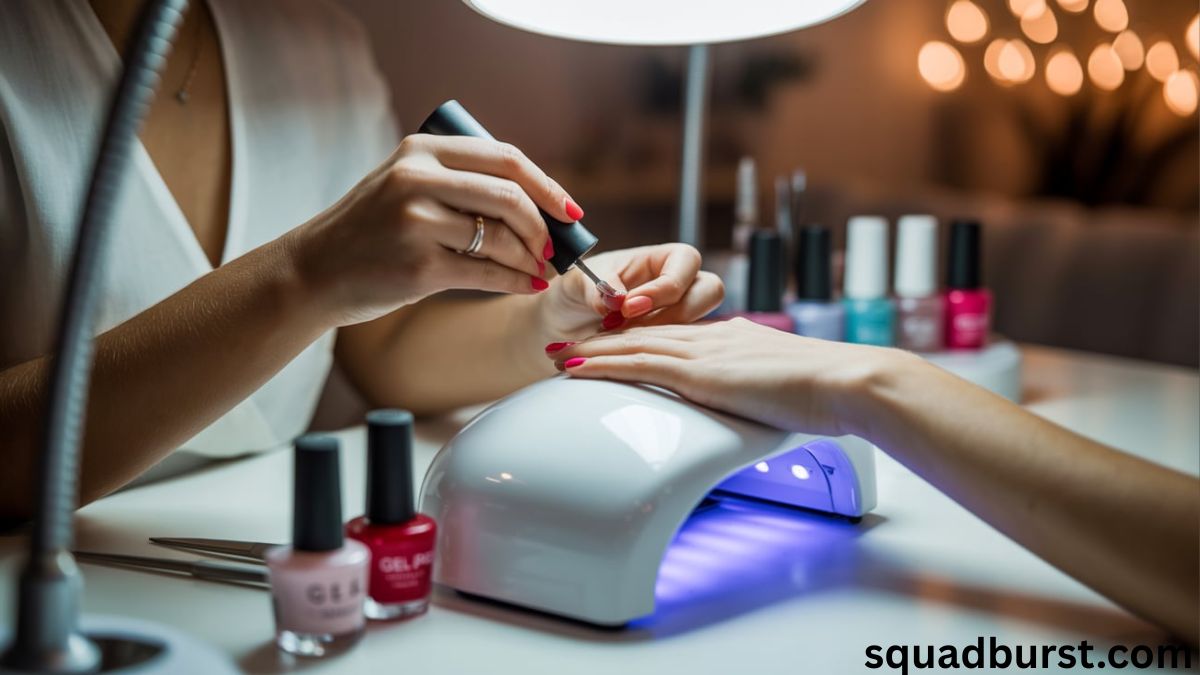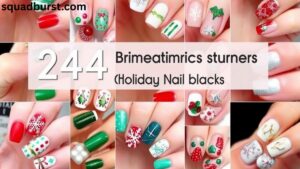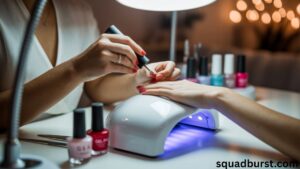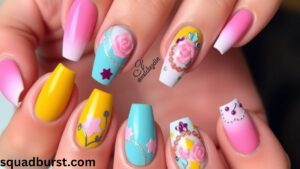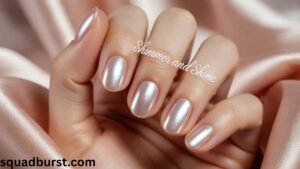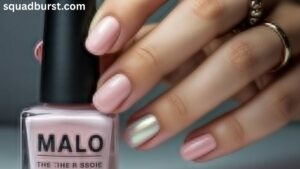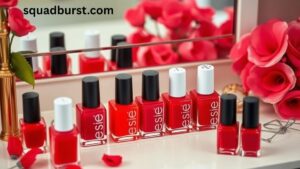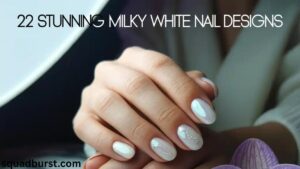What types of manicure are there and what are the manicure techniques?Whether you’re a nail care beginner or seeking to master advanced manicure techniques, understanding the different types of manicures available can revolutionize your nail health and appearance.What types of manicure are there and what are the manicure techniques? Today’s nail salon industry offers everything from classic treatments to cutting-edge innovations that deliver long-lasting, chip-resistant results.
What types of manicure are there and what are the manicure techniques?This comprehensive guide breaks down every major manicure option and professional technique you need to know. You’ll discover which methods work best for your lifestyle and learn the secrets nail technicians use to create salon-quality nails.
Traditional Manicure Types That Never Go Out of Style
Classic Manicure: The Foundation of Nail Care
The basic manicure remains the gold standard for natural nail care and hand care. This timeless nail treatment focuses on nail cleaning, cuticle care, and a polished finish that typically lasts 5-7 days.
What’s included in a classic manicure:
- Thorough hand soaking and cleaning
- Cuticle care with gentle pushing and trimming
- Nail shaping to your preferred style
- Buffing for smooth surface preparation
- Base coat, two color coats, and top coat application
The classic manicure works perfectly for those seeking a low-maintenance option or preparing for special events. Most people can expect to pay $15-30 for this service, making it an affordable entry point into professional nail care.
Best candidates: Anyone new to manicures, those with healthy natural nails, or people wanting a natural look for professional settings.
French Manicure: Timeless Elegance
The French manicure epitomizes elegant and feminine nail styling. This technique creates a professional look with nude or pink base tones and crisp white tips that complement any outfit or occasion.
Traditional French manicure application involves:
- Careful nail shaping into square or oval forms
- Base coat application for protection
- Two coats of nude or pink polish
- Precise white tip painting using guides or freehand techniques
- Top coat sealing for high-shine finish
Modern variations have expanded beyond classic white tips. You’ll now find colored tips, reverse French designs, and gradient effects that add contemporary flair to this timeless style.
Pro tip: French manicures typically last 7-10 days and work especially well on medium to long nails where the white tips have room to shine.
Paraffin Wax Manicure: Therapeutic Luxury
Paraffin wax manicures combine traditional nail treatment with therapeutic hand care. The warm wax provides deep moisturizing and hydration benefits that regular manicures can’t match.What types of manicure are there and what are the manicure techniques?
The process involves:
- Complete basic manicure steps
- Hand dipping in melted paraffin wax (around 125°F)
- Wrapping hands in plastic and towels for 10-15 minutes
- Wax removal revealing incredibly soft skin
- Final polish application
This treatment excels during winter months when hands need extra moisture. The exfoliation and hydration benefits make it perfect for mature skin or anyone with dry, cracked hands.
Safety note: Always verify wax temperature and avoid this treatment if you have cuts, circulation issues, or diabetes.
Long-Lasting Enhancement Methods for Busy Lifestyles
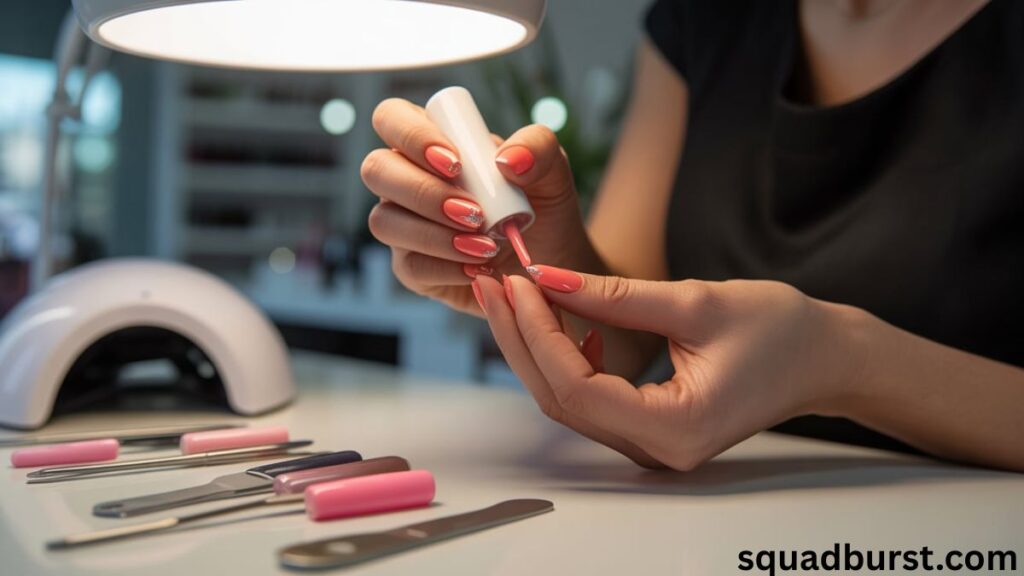
Gel Manicure: The Game-Changer
Gel manicures revolutionized the nail salon industry by delivering chip-resistant, long-lasting results that maintain their high-shine finish for 2-3 weeks. This UV cured polish system creates a durable coating that’s perfect for active lifestyles.
How gel application works:
- Nail prep with gentle buffing and cleaning
- Base coat application and UV lamp or LED lamp curing (30-60 seconds)
- Two thin color coats with curing between each
- Top coat application and final curing
- Cuticle oil and hand cream finish
Key benefits:
- Durability that withstands daily activities
- Immediate dry time (no smudging!)
- Strength that helps prevent nail breakage
- Hundreds of color options including matte finishes
Removal considerations: Gel manicures require acetone removal method or professional filing. Improper removal can damage your natural nails, so always follow safe protocols.
Shellac Manicure: The Gentle Hybrid
Shellac represents CND’s patented hybrid formula that combines traditional polish ease with gel durability. This system offers a middle ground between regular polish and full gel systems.
Shellac advantages:
- Gentler removal process than traditional gel
- Natural flexibility that moves with your nails
- Professional look without excessive thickness
- 14-day wear expectancy with proper application
The shellac manicure process mirrors gel application but uses specific CND products formulated to work together. Many nail technicians prefer this system for clients with thinner or more flexible nails.
Dip Powder Manicure: Strength Meets Convenience
Dip powder manicures gained popularity for their incredible strength and long-lasting properties. This technique can last 3-4 weeks while providing natural-looking nail enhancement.
Application process:
- Nail shaping and cuticle care
- Base coat application
- Nail dipping into colored powder polymer
- Bonding agent application
- Repeat dipping for opacity
- Filing and shaping the dried powder
- Top coat sealing
Benefits include:
- No UV light required
- Vitamin-enriched formulas in many brands
- Excellent durability for active individuals
- Wide color selection including glitters and effects
Sanitation tip: Ensure your nail salon uses individual powder containers or hygienically maintained dipping systems to prevent contamination.
Acrylic Manicure: Ultimate Length and Strength
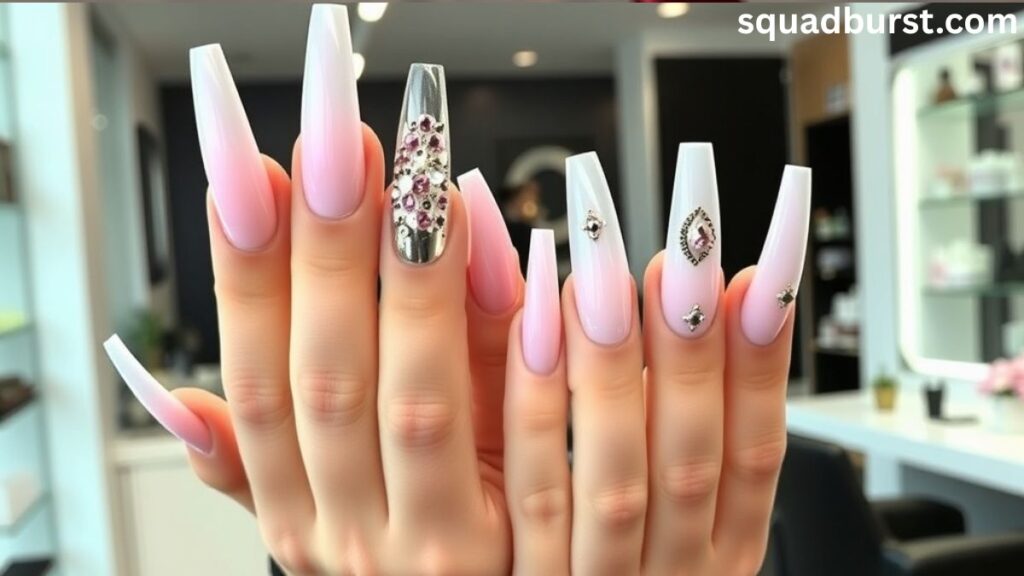
the Acrylic manicures remain the go-to choice for dramatic length and unmatched strength. This system combines liquid monomer and powder polymer to create custom nail extensions or overlays.
Two main application methods:
- Tip application: Plastic tips glued to natural nails, then covered with acrylic
- Sculpting: Acrylic applied over forms to create length from scratch
Acrylic benefits:
- Unlimited length possibilities
- Superior strength for those with weak nails
- Easy repair if breaks occur
- Cost-effective for long-term wear
Maintenance requirements:
- Fill appointments every 2-3 weeks
- Proper cuticle care to prevent lifting
- Safe removal when ready for change
Professional tip: Quality acrylic application requires significant skill. Always choose experienced nail technicians for best results.
Essential Manicure Techniques Every Nail Enthusiast Should Know
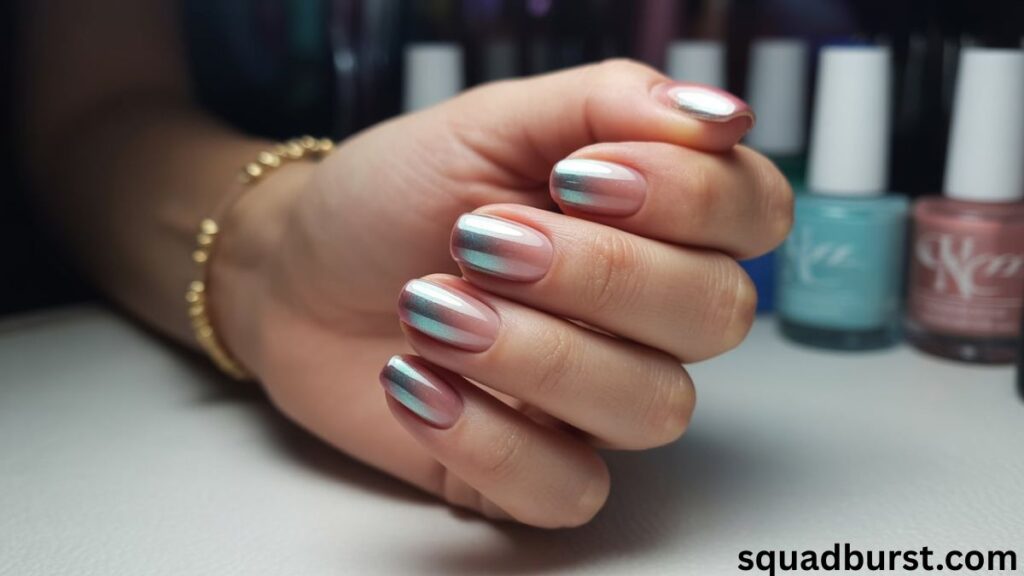
Cuticle Care: The Foundation of Healthy Nails
Proper cuticle care separates amateur manicures from professional results. Your cuticles protect the nail growth area, so gentle treatment is essential for nail health.
Safe cuticle care steps:
- Soak hands in warm, soapy water for 5 minutes
- Apply cuticle softener or cuticle oil treatment
- Gently push cuticles back with an orange stick
- Trim only loose, dead skin (never cut living tissue)
- Moisturize with cuticle oil
Common mistakes to avoid:
- Over-cutting healthy cuticle tissue
- Using metal tools too aggressively
- Skipping the softening step
- Neglecting daily cuticle oil application
Pro insight: What types of manicure are there and what are the manicure techniques?Daily cuticle oil treatment prevents hangnails and keeps your manicure looking fresh longer.
Professional Nail Shaping Techniques
Nail shaping dramatically impacts both the appearance and durability of your manicure. Each shape offers different benefits and suits various finger types and lifestyles.
| Nail Shape | Best For | Durability | Maintenance |
|---|---|---|---|
| Square | Wide nail beds, professional look | High | Low |
| Round | Active lifestyles, natural appearance | Very High | Very Low |
| Oval | Most finger types, elegant look | High | Low |
| Almond | Long fingers, feminine style | Medium | Medium |
| Stiletto | Bold fashion statements | Low | High |
Shaping technique tips:
- Always file in one direction to prevent splits
- Use a high-quality glass or crystal nail file
- Shape gradually – you can always file more off
- Consider your lifestyle when choosing length
Surface Preparation and Buffing Mastery
Proper buffing creates the smooth surface necessary for professional polish application. However, over-buffing can thin and weaken your nails.
Buffing best practices:
- Use a four-way buffer for complete surface prep
- Start with coarse grit to smooth ridges
- Progress through finer grits for smoothness
- Finish with the finest side for natural shine
- Limit aggressive buffing to once monthly
Surface preparation steps:
- Remove all old polish completely
- Buff away ridges and imperfections
- Clean nails with alcohol or dehydrator
- Apply base coat for adhesion and protection
Polish Application Like a Pro
Perfect polish application requires technique, patience, and quality products. The three-stroke method remains the professional standard for smooth, even coverage.
Three-stroke technique:
- Place brush at cuticle line, push back slightly
- Paint straight down the center of the nail
- Paint left side, then right side with smooth strokes
- Apply thin coats rather than thick ones
Professional application tips:
- Roll polish bottles between palms (never shake)
- Use a base coat appropriate for your nail typeWhat types of manicure are there and what are the manicure techniques?
- Allow 2-3 minutes drying time between coats
- Clean up mistakes with a small brush dipped in acetone
- Seal edges with top coat for maximum longevity
Advanced Application Methods and Nail Art
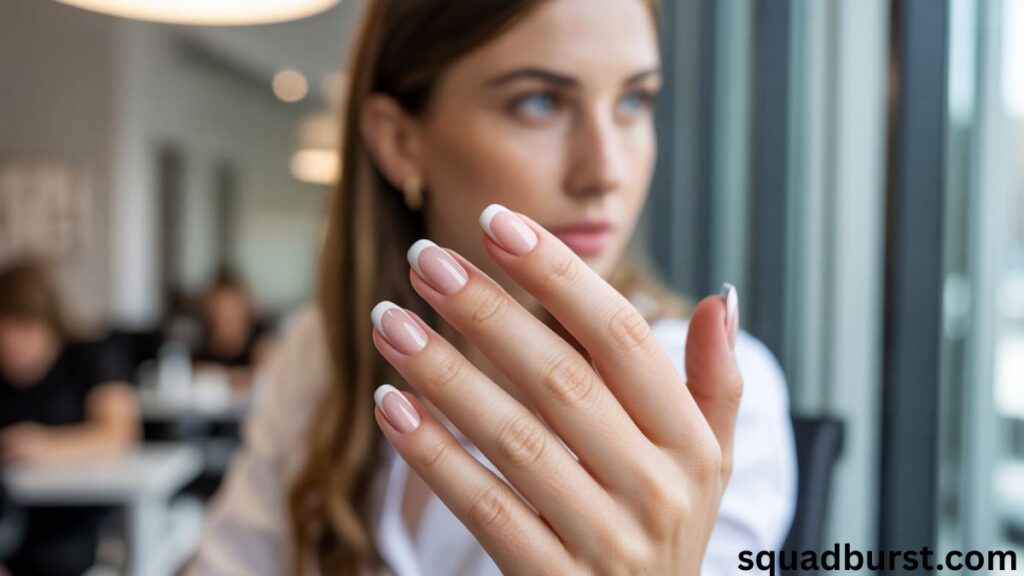
Nail Art Integration for Creative Expression
Modern nail art transforms simple manicures into custom nail art masterpieces. From subtle accents to bold nail designs, artistic elements add personality to any nail treatment.
Popular nail art techniques:
Stamping: Uses metal plates and special polish to transfer intricate designs
- Requires nail stamping kit and practice
- Perfect for consistent, detailed patterns
- Works on any manicure base
Freehand painting: Artistic brush work for creative nail decoration
- Needs steady hands and quality brushes
- Unlimited design possibilities
- Best over cured gel or dried polish
3D embellishments: Adds texture with gems, studs, and charms
- Applied over wet top coat or special adhesive
- Creates dramatic, eye-catching effects
- Requires careful placement and sealing
Curing Technology for Long-Lasting Results
Understanding curing technology ensures your gel-based manicures achieve maximum durability and longevity.
UV vs LED comparison:
| Feature | UV Lamps | LED Lamps |
|---|---|---|
| Curing Time | 2-3 minutes | 30-60 seconds |
| Bulb Life | 6-12 months | 2-3 years |
| Heat Generation | High | Low |
| Polish Compatibility | Universal | Brand-specific |
Proper curing guidelines:
- Follow manufacturer’s recommended times
- Replace bulbs according to schedule
- Position hands correctly in lamp
- Avoid under-curing (sticky, soft finish)
- Prevent over-curing (brittle, yellowing nails)
Safe Removal and Nail Health Maintenance
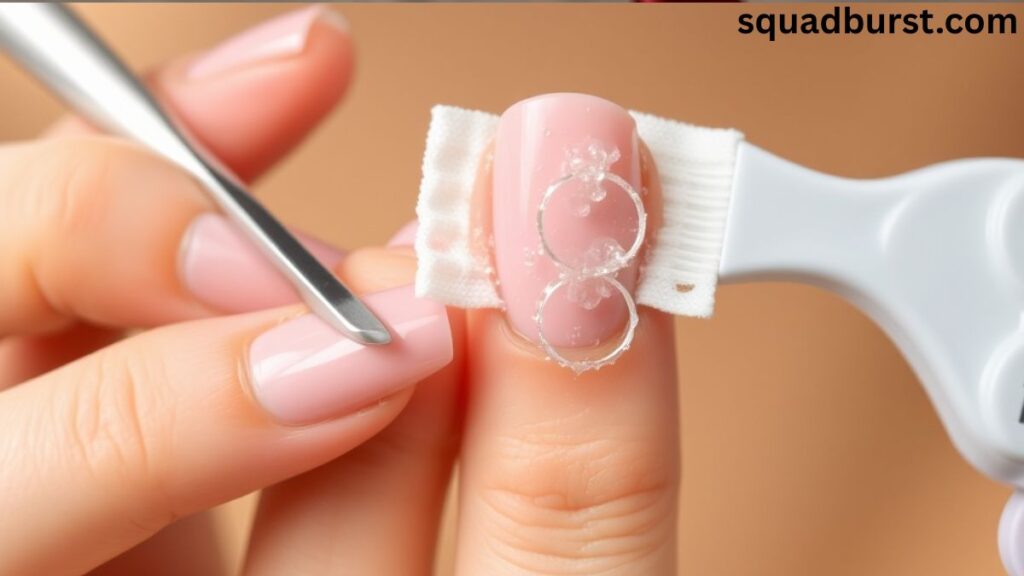
Damage-Free Removal Methods
Safe removal protects your natural nails and maintains nail health between manicures. Different enhancement types require specific removal approaches.
Gel and Shellac removal:
- Soak cotton balls in acetone
- Place on each nail and wrap with foil
- Wait 10-15 minutes for polish to dissolve
- Gently push off softened polish
- Buff away any residue carefully
- Apply cuticle oil and hand cream
Acrylic removal:
- File off top coat and surface acrylic
- Soak in acetone for 20-30 minutes
- Use orange stick to gently lift edges
- Never force or pry off remaining product
- Buff smooth and moisturize thoroughly
Dip powder removal:
- File away top coat completely
- Soak in acetone for 15-20 minutes
- Gently push off dissolved powder
- Buff any remaining residue
- Apply strengthening treatment
Post-Removal Nail Rehabilitation
Your nails need recovery time between enhancement applications. Nail health depends on proper care during these break periods.
Recovery routine:
- Apply strengthening treatments daily
- Massage cuticle oil into nail beds
- Use hand cream frequently
- Avoid harsh chemicals and excessive water exposure
- Consider nail enhancement alternatives like strengthening base coats
Choosing Your Perfect Manicure Based on Lifestyle

Professional and Career Considerations
Your career might influence manicure choices. Some professions require conservative natural looks, while others allow creative expression.
Conservative professions: Healthcare, finance, law
- Classic manicure or French manicure
- Neutral colors: nude, light pink, clear
- Shorter lengths for practicality
- Professional look that doesn’t distract
Creative professions: Fashion, beauty, arts
- Bold nail designs and artistic elements
- Trendy nail styles and seasonal colors
- Longer lengths and dramatic shapes
- Custom nail art for self-expression
Activity Level and Durability Needs
Your lifestyle determines which manicure types will work best and last longest.
High-activity lifestyles:
- Gel manicure or dip powder for durability
- Shorter lengths and rounded shapes
- Chip-resistant formulas
- Low-maintenance options
Gentle lifestyles:
- Any manicure type works well
- Longer lengths and delicate shapes possible
- Regular polish acceptable
- More frequent touch-ups manageable
Professional vs DIY: Making the Right Choice
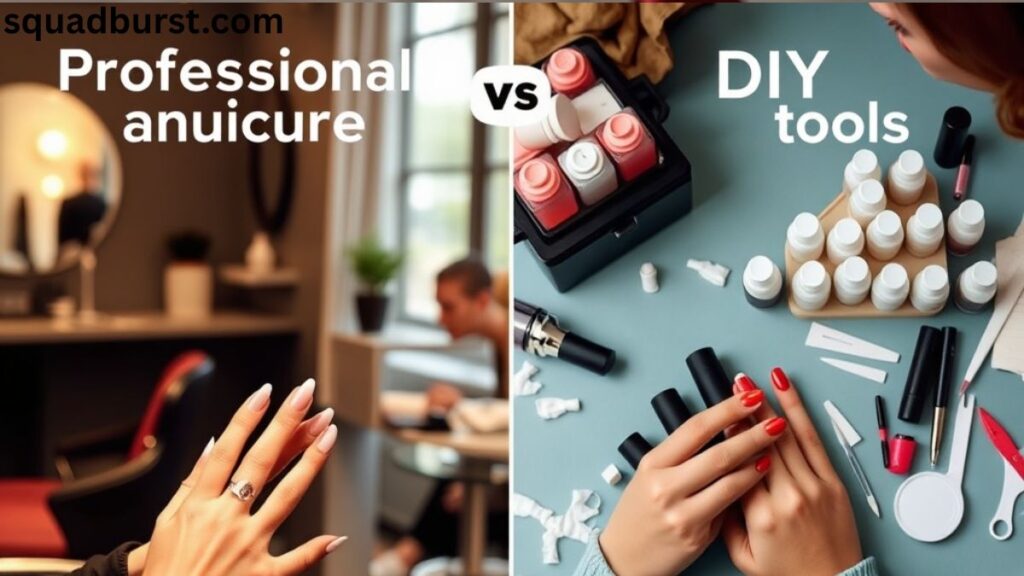
When Professional Treatment Is Worth It
Certain manicure techniques require professional expertise for safety and quality results.
Always see a professional for:
- Acrylic application and removal
- Complex nail art designs
- Problem nail issues (infections, severe damage)
- First-time enhancement applications
- Gel overlay on damaged nails
Professional advantages:
- Proper sanitation and safety protocols
- High-quality products and tools
- Expertise in nail health assessment
- Time efficiency and convenience
- Warranty on services
Building Your At-Home Manicure Kit
DIY manicures can be cost-effective and convenient with the right tools and knowledge.
Essential tools for home use:
- High-quality nail files and buffers
- Cuticle care tools (orange sticks, nippers)
- Base coat, top coat, and color selection
- Hand cream and cuticle oil
- Acetone and cotton pads for cleanup
Skill development tips:
- Start with basic manicures before trying enhancements
- Practice nail shaping and polish application
- Watch professional technique videos
- Invest in quality products gradually
- Know when to seek professional help
Future Trends in Manicure Technology
The nail care industry continues evolving with innovations that make professional results more accessible.
Emerging trends include:
- At-home gel systems with improved safety
- Eco-friendly and vegan nail polish formulations
- Smart polishes that change color with temperature
- Digital nail art printing technology
- Advanced nail health monitoring systems
Sustainable practices are becoming increasingly important, with many nail salons adopting eco-friendly products and waste reduction methods.
Conclusion: Your Path to Perfect Nails
Understanding the various types of manicures and manicure techniques empowers you to make informed decisions about your nail care. Whether you prefer the simplicity of a classic manicure, the durability of gel enhancements, or the artistry of custom nail art, there’s a perfect option for your lifestyle and preferences.
Remember that nail health should always be your top priority. Choose reputable nail salons, follow safe removal practices, and give your nails regular breaks between enhancements. With proper care and the right techniques, you can enjoy beautiful, healthy nails that enhance your confidence and personal style.
The world of professional manicures offers endless possibilities for self-expression and nail enhancement. What types of manicure are there and what are the manicure techniques?Start with the basics, experiment with different techniques, and don’t be afraid to try new trends. Your perfect manicure is waiting to be discovered!
FAQs
Q: What’s the longest-lasting manicure type available in 2025?
A: Dip powder manicures currently offer the best longevity, lasting 3-4 weeks with proper application. Gel manicures follow closely at 2-3 weeks duration.
Q: Which manicure technique is safest for weak or damaged nails?
A: Classic manicures with strengthening base coats are gentlest for damaged nails. Avoid acrylics and opt for gel overlays only after nail recovery.
Q: How much should I expect to pay for different manicure types in 2025?
A: Classic manicures cost $15-30, gel manicures $35-50, acrylics $45-70, and dip powder $40-60. Prices vary by location and salon quality.
Q: Can I safely remove gel manicures at home?
A: Yes, soak nails in acetone for 10-15 minutes, then gently push off softened polish. Never peel or force removal to avoid nail damage.
Q: What’s the difference between shellac and regular gel polish?
A: Shellac is CND’s specific hybrid formula that’s gentler and easier to remove than traditional gel polish. It offers similar durability with less nail damage risk.

Emma Grace is a creative contributor to Squad Burst, blending her love for fashion and sports into captivating content. Her fresh perspective and relatable voice make her a favorite among readers who share her passion for style and athleticism.
